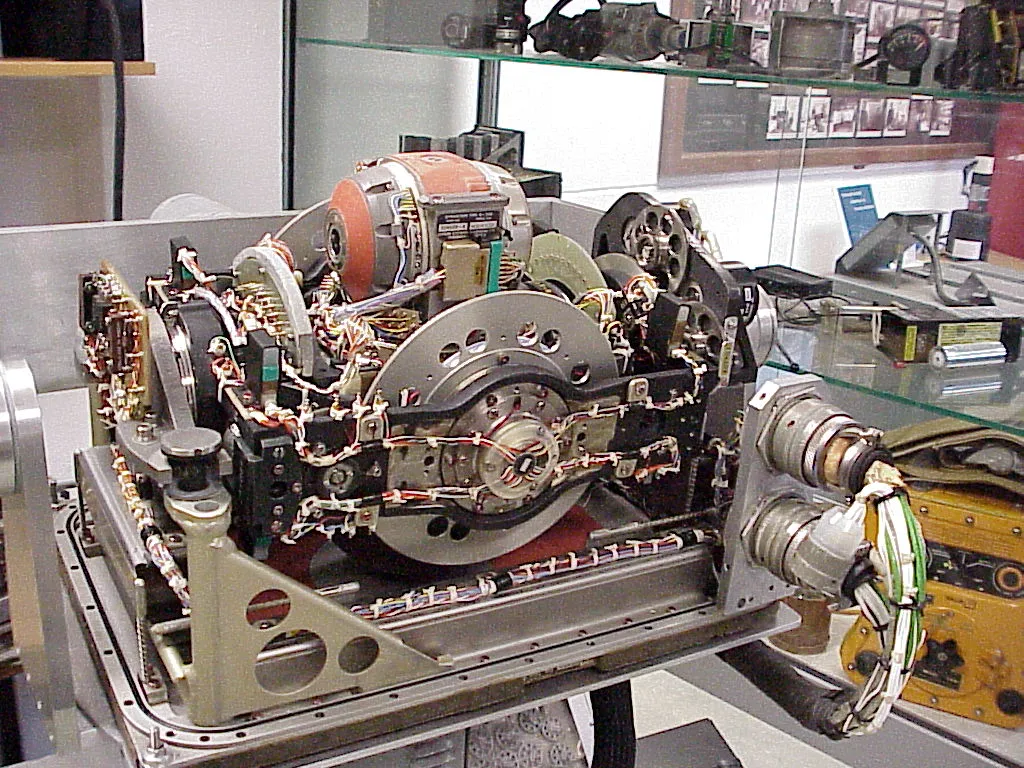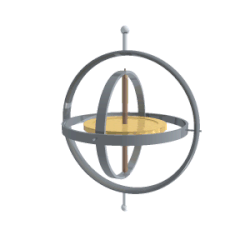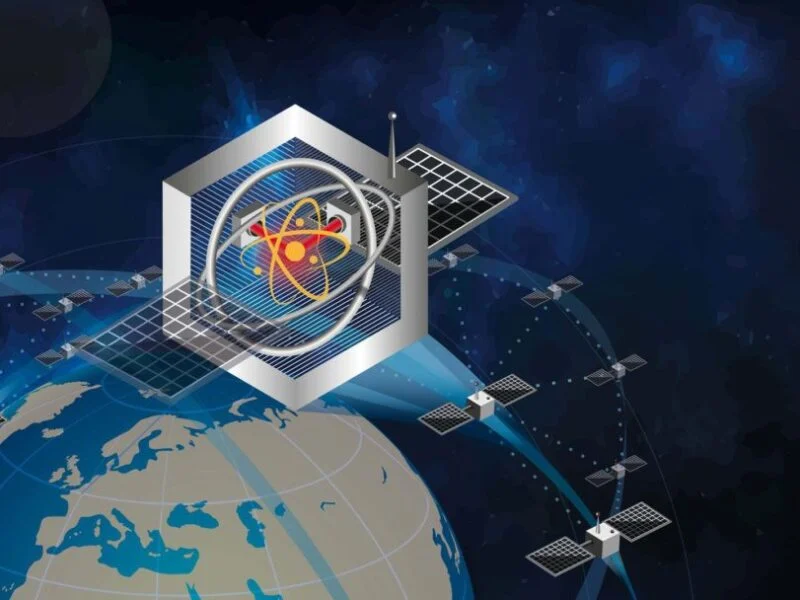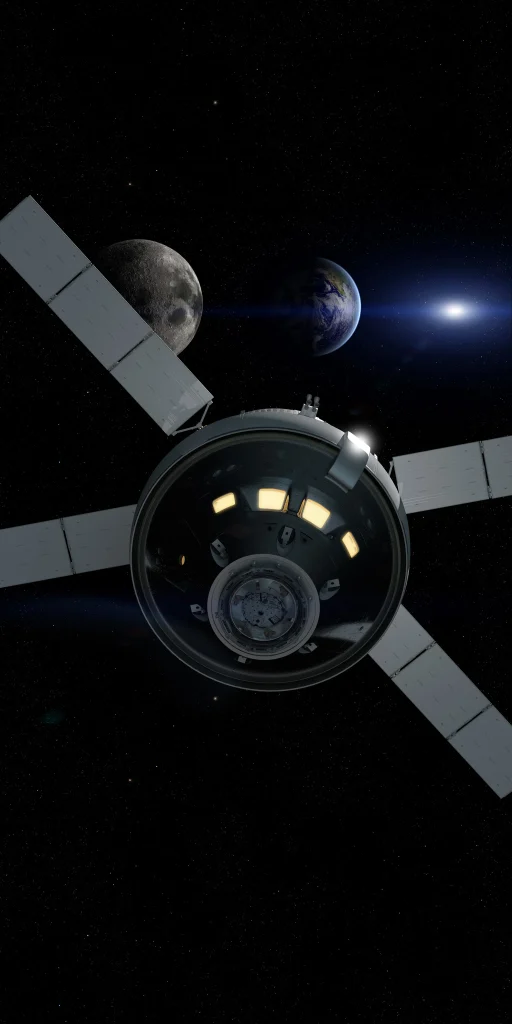Inertial Navigation Systems (INS) – How Rockets Use Gyroscopes and Accelerometers for Precise Navigation

Introduction
Modern space exploration relies on advanced navigation systems to ensure rockets reach their destinations with precision. One of the most critical technologies behind this capability is the Inertial Navigation System (INS). INS enables rockets to determine their position, velocity, and orientation without relying on external signals. This is especially crucial in space, where traditional GPS signals are unavailable.
At the heart of INS are gyroscopes and accelerometers, which work together to track movement and orientation changes. In this blog, we will dive deep into how these components function, their significance in rocket guidance, and the role they play in successful space missions.
What is an Inertial Navigation System (INS)?
An Inertial Navigation System (INS) is a self-contained system that uses motion-sensing devices to estimate a rocket’s position and movement. Unlike GPS, which relies on satellite signals, INS operates independently by continuously calculating position based on initial known coordinates and subsequent motion data.
Key Components of INS
- Gyroscopes – Measure angular velocity (rotation rate) to track changes in orientation.
- Accelerometers – Detect linear acceleration to compute changes in speed and position.
- Inertial Measurement Unit (IMU) – Houses multiple gyroscopes and accelerometers in a compact module.
- Navigation Computer – Processes the data from IMU to estimate position, velocity, and attitude.
INS is crucial for deep-space missions, interplanetary travel, and high-speed rockets where external navigation signals are unreliable.
The Role of Gyroscopes in INS
What is a Gyroscope?
A gyroscope is a device that measures the rate of rotation around an axis. It helps determine the rocket’s attitude (orientation in 3D space) by tracking angular movement.
Types of Gyroscopes Used in Rockets
- Mechanical Gyroscopes – Use spinning rotors to detect angular movement.
- Fiber Optic Gyroscopes (FOG) – Utilize light traveling through fiber optic coils to measure rotation.
- Ring Laser Gyroscopes (RLG) – Use interference patterns of laser beams to detect movement.
- MEMS Gyroscopes – Miniature gyros used in small satellites and spacecraft.
How Gyroscopes Work in Rockets
- When a rocket rotates, the gyroscope detects changes in angular velocity.
- This data is fed into the INS to update the rocket’s orientation.
- It helps the flight computer make corrections to keep the rocket on course.

The Role of Accelerometers in INS
What is an Accelerometer?
An accelerometer measures changes in velocity along an axis. It detects linear acceleration forces and helps calculate speed and position.
Types of Accelerometers Used in Rockets
- Mechanical Accelerometers – Measure acceleration using a suspended mass and spring system.
- MEMS Accelerometers – Use microscopic structures to sense movement.
- Quartz Accelerometers – Provide high precision for aerospace applications.
How Accelerometers Work in Rockets
- They detect the force exerted as the rocket moves through space.
- The navigation computer integrates acceleration data to compute velocity.
- By integrating velocity over time, the rocket’s position is estimated.

How INS Works in Rocket Navigation
1. Pre-Launch Alignment
Before launch, the INS is initialized with a known position and orientation. This ensures accurate calculations during flight.
2. Launch and Ascent Phase
- INS continuously measures acceleration and rotation.
- The navigation computer updates position and orientation in real-time.
- If deviations occur, corrective actions are taken by the rocket’s control systems.
3. Mid-Flight Navigation
- As the rocket reaches space, INS remains the primary navigation system.
- Since external references (like GPS) are unavailable, INS provides essential positional data.
- Data is used for course corrections and stage separations.
4. Re-Entry and Landing
- INS guides the vehicle back into the atmosphere.
- For reusable rockets (like SpaceX Falcon 9), INS assists in precision landing.

Advantages of INS in Rocket Navigation
✅ No External Dependency – Unlike GPS, INS works in deep space without external signals. ✅ High Accuracy – Provides precise navigation when properly calibrated. ✅ Fast Response Time – Reacts instantly to changes in motion and orientation. ✅ Reliable in Harsh Environments – Functions in extreme temperatures and vibrations. ✅ Essential for Deep Space Missions – Used by NASA, SpaceX, and other agencies for missions beyond Earth.
Challenges and Limitations of INS
🔴 Drift Error – Over time, small errors accumulate, leading to positional inaccuracies. 🔴 Calibration Requirements – INS needs precise initial alignment to function accurately. 🔴 Complexity & Cost – High-end INS systems are expensive and require advanced technology. 🔴 Integration with Other Systems – Often combined with GPS and star trackers to improve accuracy.
To overcome drift error, modern rockets combine INS with external sensors such as GPS, star trackers, and radar to enhance accuracy.
📌 Image Suggestion: Diagram showing INS working alongside GPS and other systems.
Real-World Applications of INS in Rockets
1. SpaceX Falcon 9
- Uses IMU-based INS for launch, flight, and precision landing.
- Works alongside GPS and radar for added accuracy.
2. NASA Artemis Mission
- Relies on INS for deep-space travel and Moon landings.
- Works with star trackers for enhanced navigation.
3. Mars Rovers & Space Probes
- INS is crucial for interplanetary missions like Perseverance and Voyager probes.
- Helps spacecraft navigate autonomously beyond Earth’s orbit.
📌 Image Suggestion: SpaceX Falcon 9 landing guided by INS.
Future of INS in Space Exploration
With advancements in quantum gyroscopes and AI-based navigation, future INS systems will be more accurate and resistant to drift errors. Quantum Inertial Sensors, currently under research, promise near-zero drift, making them ideal for long-duration space missions.
Upcoming Innovations:
- AI-enhanced INS for autonomous spacecraft navigation.
- Hybrid INS-GPS-Star Tracker Systems for interstellar travel.
- Miniaturized INS for small satellites and drones.

Conclusion
The Inertial Navigation System (INS) is a critical component of modern rocket technology, enabling precise navigation without external signals. By leveraging gyroscopes and accelerometers, INS ensures accurate position tracking for space missions. Despite challenges like drift error, advancements in AI, quantum sensors, and hybrid systems will push the boundaries of INS technology, making future space exploration more precise and efficient.
As we venture into deep space, INS will remain the backbone of spaceflight navigation, guiding missions to the Moon, Mars, and beyond! 🚀





Nice